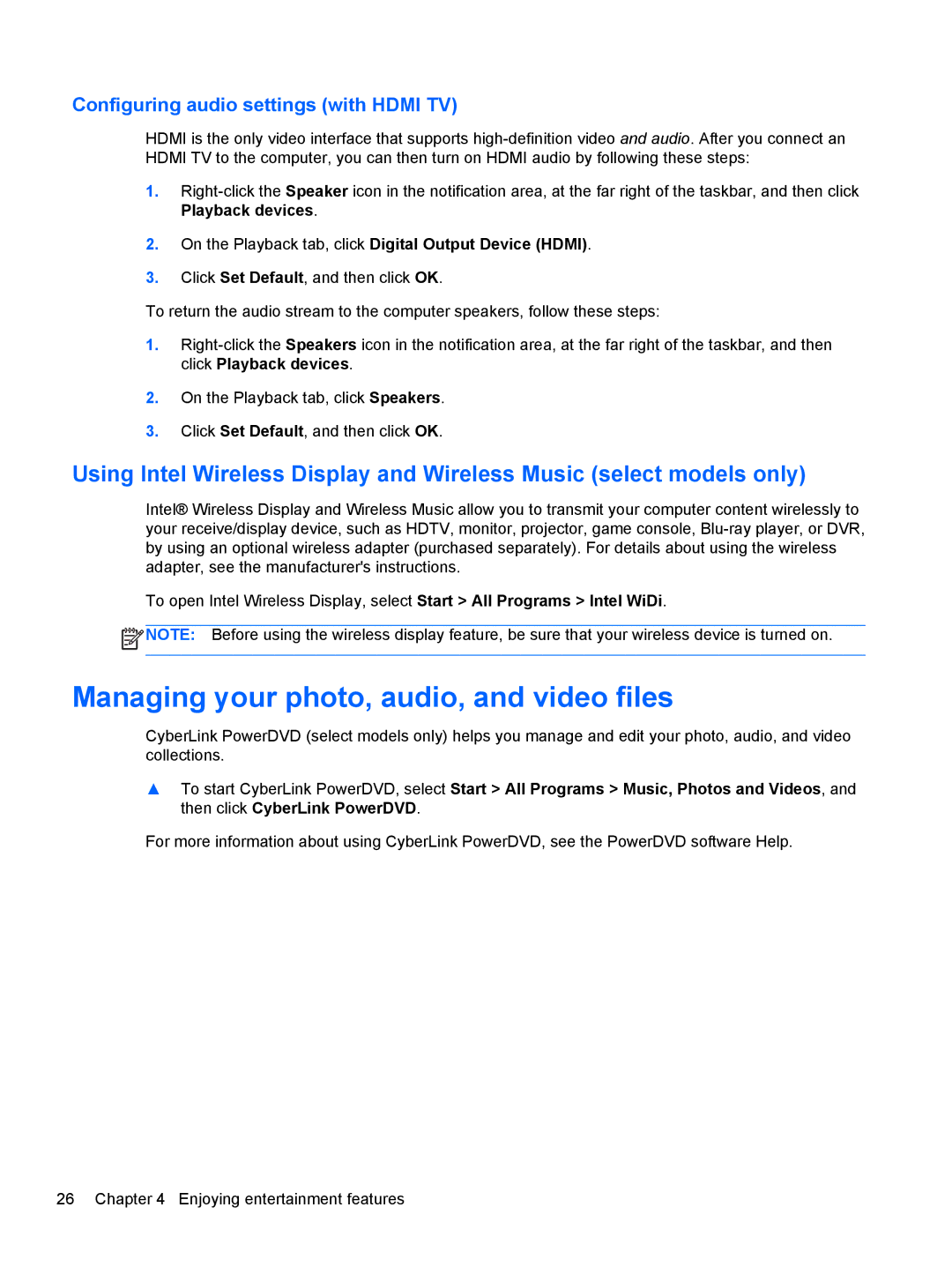Configuring audio settings (with HDMI TV)
HDMI is the only video interface that supports
1.
2.On the Playback tab, click Digital Output Device (HDMI).
3.Click Set Default, and then click OK.
To return the audio stream to the computer speakers, follow these steps:
1.
2.On the Playback tab, click Speakers.
3.Click Set Default, and then click OK.
Using Intel Wireless Display and Wireless Music (select models only)
Intel® Wireless Display and Wireless Music allow you to transmit your computer content wirelessly to your receive/display device, such as HDTV, monitor, projector, game console,
To open Intel Wireless Display, select Start > All Programs > Intel WiDi.
![]() NOTE: Before using the wireless display feature, be sure that your wireless device is turned on.
NOTE: Before using the wireless display feature, be sure that your wireless device is turned on.
Managing your photo, audio, and video files
CyberLink PowerDVD (select models only) helps you manage and edit your photo, audio, and video collections.
▲To start CyberLink PowerDVD, select Start > All Programs > Music, Photos and Videos, and then click CyberLink PowerDVD.
For more information about using CyberLink PowerDVD, see the PowerDVD software Help.
